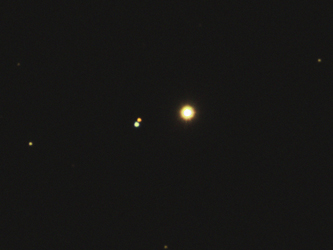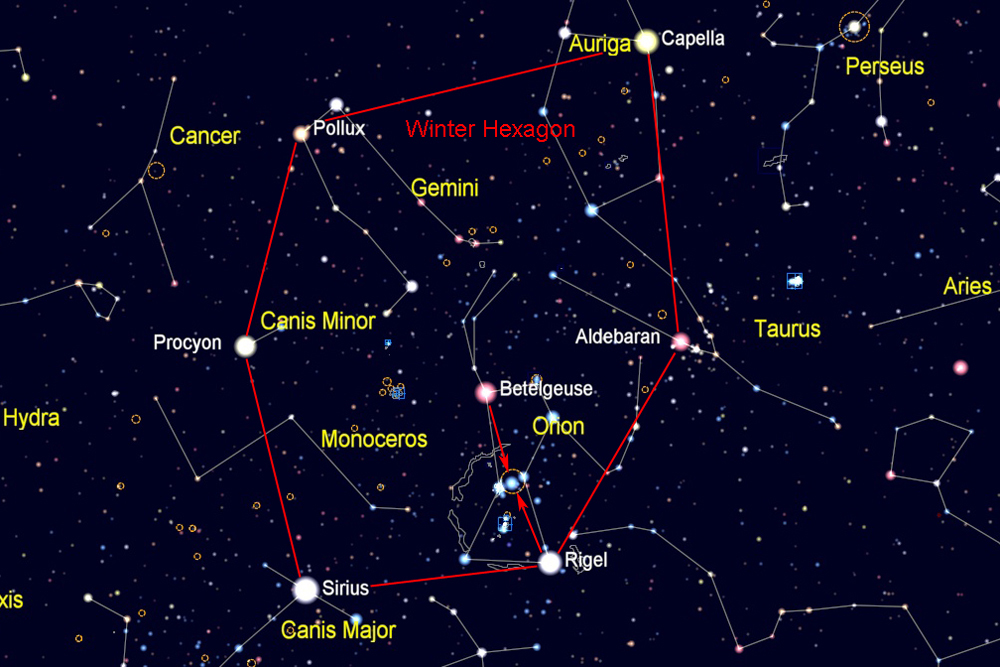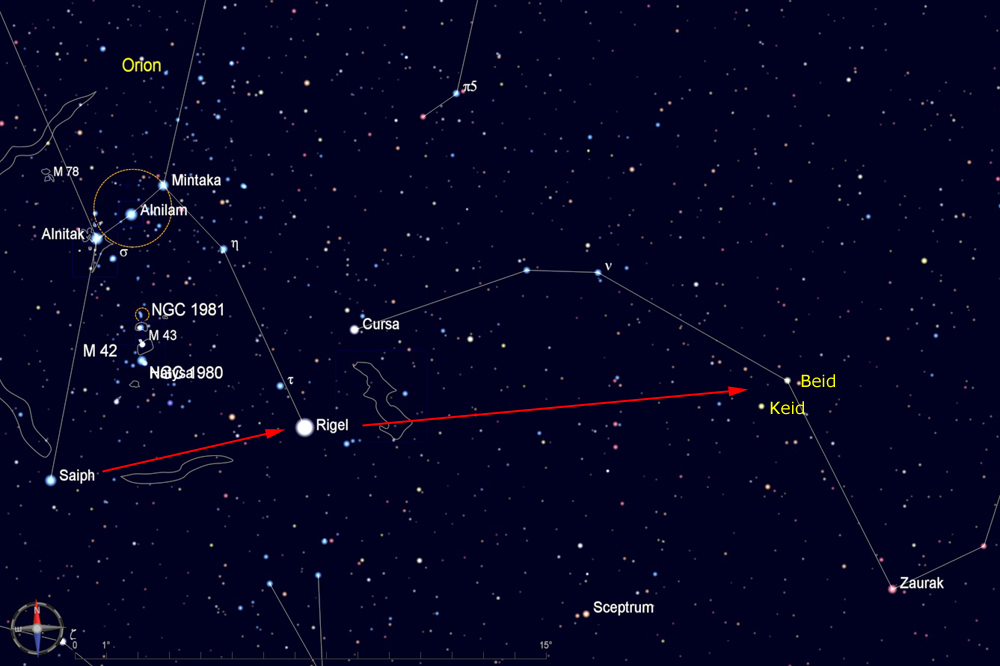
If you don't know how to find the constellation Orion, first find the Winter Hexagon, which is composed of six of the brightest stars in the sky--Sirius, Procyon, Pollux, Capella, Aldebaran, and Rigel. On mid-winter evenings, these stars form a large oval stretching from low in the south to nearly overhead. As spring begins, the Winter Hexagon sinks toward the west. The constellation Orion and its bright red star Betelgeuse are inside the Hexagon.
Between Betelgeuse and Rigel is a row of three bright stars that form the belt of Orion.

Visualize an arrow pointing to the west across the two "feet" of Orion (Saiph and Rigel). Extend that arrow about twice as far beyond Rigel and you will come to two 4th magnitude stars (Beid and Keid), the brightest stars in that area of the sky. The dimmer one, to the southeast, is Keid.
